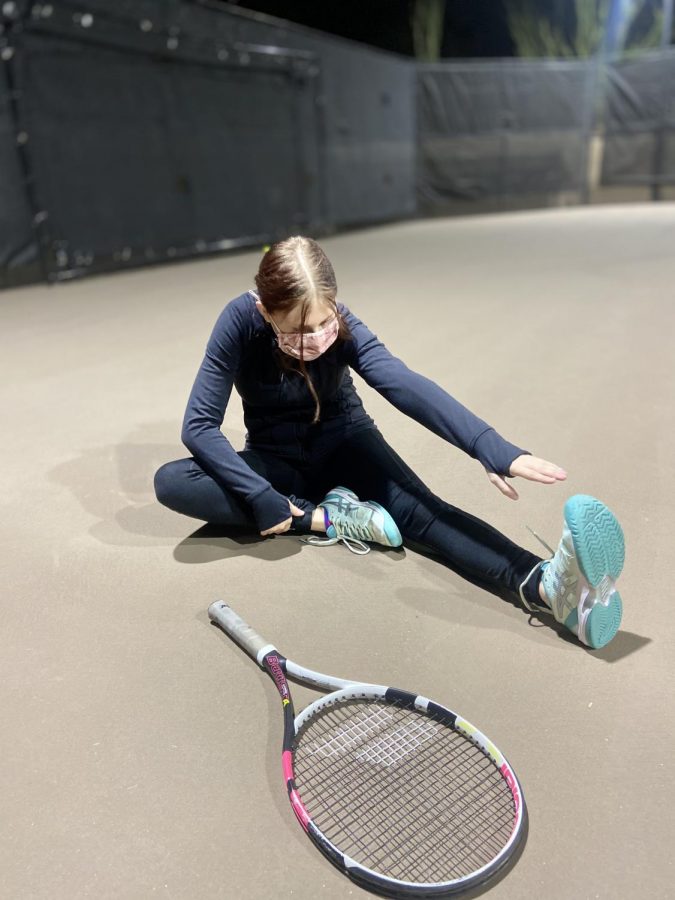The ins and outs of an injured athlete
Emily Smitten, freshman, stretches after playing tennis.
November 10, 2021
Athletes are almost always subjected to injury. With the high level of strain that they put on their bodies, injuries in sports are very common.
Most sports related injuries are due to trauma or overuse of a joint or muscle. As doctors and coaches gain a deeper insight into new preventative measures, there are extra precautions put in place in an attempt to keep athletes as safe as possible.
“[Athletes] should be keeping themselves healthy and well on their own so that they are feeling 100 percent during practice and games and performing the correct techniques for their sport to prevent any injuries from happening,” said Kristin Le, senior.
Le is a senior sports medicine student at OHS and has seen her fair share of injuries and knows all of the tips and tricks to help keep athletes as healthy as possible.
“When [athletes] get injured, we express our concerns with them and tell them what they can and should be doing to heal and recommend that they come into the athletic training room for more preventative care, if needed,” Le said.
Although there usually is not any life threatening injuries, OHS sports medicine likes to ensure the safety of everyone, especially their athletes.
“I definitely think that there aren’t too many of those bigger injuries like breaking a bone or tearing something, but there are lots of those more common ones like spraining an ankle or cramping,” Le said.
The most common injuries in sports are often muscle cramps or sprains, which are not as severe as a broken bone or a torn ligament, but still need to be taken care of appropriately in order to properly heal.
“I don’t think that major injuries happen too frequently because the AIA has put in certain rules to help limit those types of injuries,” said Connor Coleman, junior.
Along with athletes and coaching techniques, the AIA and its rules are trying to ensure the wellbeing of all athletes and want to help everyone avoid injury.
“We can’t use the crowns of our helmets to hit, we can’t hit the quarterbacks after they throw the ball, you can’t make high and low blocks on defensive lineman, you can’t drive at offensive lineman’s legs, and you can’t hurdle kids. Those are a few of the more basic rules but they are all there for the player’s safety,” Coleman said.
Although some of the rules put in place limit the game, they are all designed to keep everyone as safe as possible. Coaches have also implemented their own rules in practice in order to help prevent any injuries in their players.
“We try and keep from tackling to the ground and try and stop from hitting after plays to stop stupid injuries but overall, I think that some measures have been taken to look after our safety,” Coleman said.
Many coaches played themselves and want to make sure that they keep their players as safe as possible and protect them from any injuries that they had when they were playing their respected sport.
“[Football] is a rigorous, strenuous, high impact sport that puts a lot of stress and pressure on your body. Anatomically, I think when you twerk your body and you combine it with the weight of another person falling on you, you are a little more susceptible to injuries,” said Bradley Garraway, football coach.
With the combination of both a contact sport, and a high pressure sport, football players are almost the most often to get injured. OHS coaches are working diligently to prevent injuries from happening and keep all of their players healthy and game ready.
“Obviously you do your best to be healthy, but nicks, bumps, scratches, and bruises happen very easily,” Garraway said. “What we’re looking for is trying to train and elevate some of the more serious injuries in sports by teaching different techniques.”



